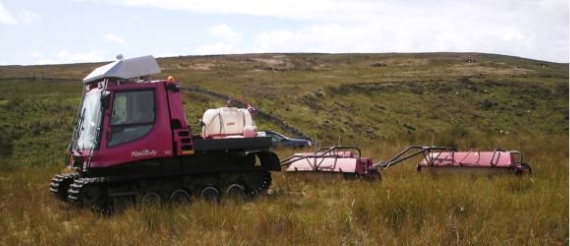
Terrestrial Bracken Control
Left unchecked, bracken has an ability to cover very large areas of ground, rendering the ground of no value to stock and of very limited value as a wildlife habitat. Bracken control is usually a key aspect of successful moorland habitat management. DMS offer a comprehensive bracken control service using specialist terrestrial vehicles. Prior to any bracken control project a wintertime survey of the site is undertaken to assess the ground conditions and mark hollows and large stones. Using Asulux herbicide the bracken can then be either sprayed or weed wiped during the summer months. Once bracken has been successfully controlled, which can take several applications, the area can be regenerated with grass or heather.
Moorland Rush Management
Soft rush areas are an important aspect of the moorland landscape. They provide partial shelter for stock, particularly young lambs, and are an important habitat for various birds, invertebrates and insects. In recent years, however, these plants have tended to spread to form large unbroken beds diminishing grazing and habitat value. Management is required to control the plant in small broken beds intermixed with other vegetation in between. DMS undertake this work on a large scale on in-bye land and open moor, covering in excess of 2000 acres per year.
Where the soft reed is out of control, the company can use weed wiping, spraying or topping, to lessen the quantity and size of rush beds, ensuring that the ecologically important rush beds and wetter areas are preserved.
Scrub Control
Scrub control is a regular feature within some environmental reinstatement projects, where the breakdown of scrub and its use as a mulch is a deliberate part of creating the right ground conditions to encourage other dwarf vegetation types and mosses.






